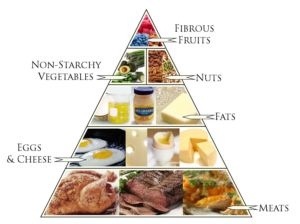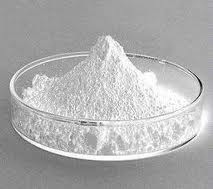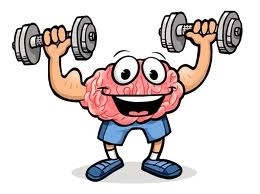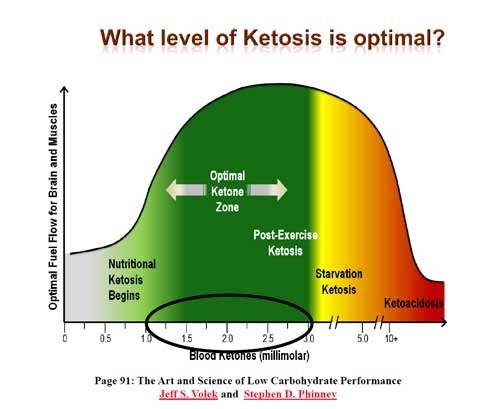 Its quite inspirational to read first hand accounts of how an incurable stage 4 cancer can be beaten when one takes the responsibility for ones treatment and looks beyond mainstream medicine, which to be honest offers little to no hope for a cure.
Its quite inspirational to read first hand accounts of how an incurable stage 4 cancer can be beaten when one takes the responsibility for ones treatment and looks beyond mainstream medicine, which to be honest offers little to no hope for a cure.
An email I received recently falls into that category and with the author’s permission, I would like to share it with you:
I have been following your blog and praying for you and your family. Two years ago I was diagnosed with an aggressive stage 4 breast cancer with liver metasis. I am now cancer free! I did a lot of research and complimentary and alternative medicine therapies. (My background is in economics, business and I have an MBA). I applied all of my research abilities, determination and drive into learning about cancer and various treatments – much the same as you have. I quickly learned that I had to be the ” president and ceo” of myself, and that conventional care really offered very little – track record of 30 or 40 years of failures; no plan for me.
In March of this year I went to Duderstadt to see Dr T. Nesselhut for dendritic cell therepy. At this point it is a preventative measure. I very much live in a cancer preventative mode. It was Dr Ralph Moss of www.cancerdecisions.com that suggested I go there. He also reinforced the ketogenic diet to starve the cancer, I was already on it.
What I really want to share with you is this “ketogenic diet”. I believe it was the perhaps the most important type of therapy that I did and that it largely contributed to my current state. I currently stay on this diet for prevention.
It is basically a no sugar, low carb, moderate protein and high fat diet. The idea is to starve the cancer of sugar. Sugar (and carbs) are what feeds cancer. This basic research was done in the 1930’s by a German, Dr Otto Warburg, and he won a Nobel medical prize for this work. Then the chemo drugs started coming on stream and the pharmas had it sidelined. There is some great research on this with regards to curing and managing cancer. You essentially starve the cancer of its food supply. Make no mistake – cancer is a metabolic disease.
It is very similar to the Atkins diet. (Many conventional hospitals use this diet to treat epilepsy. It started in the 1930’s at the famous John Hopkins Hospital in the US. Many kids have completely cured epilepsy with this. There is a movie starring Meryl Streep about Hollywood’s famous director John Abrahamas son who had severe epilepsy and was cured – it is called “Do No Harm”).
My CAM doctor put me on this diet the first day I met him and my 4cm tumor began to shrink – I went ahead with the mastectomy 2 weeks later anyway.
Just this past year a lot of information has become available on it regarding cancer. The best place to study this is at www.mercola.com
You can search in his library and it is absolutely incredible – so much reliable research, and great interviews with the doctors – Seyfried and Agostino. Please watch these.
Dr Thomas Seyfried of Boston College Massachusetts in the US is really the front runner (besides Mercola) of this. He has a very good book “Cancer is a Metabolic Disease”. In video presentations – he is very assertive and states “the standard of care is failing us”. He believes and his research indicates that sugar is the primary fuel for cancer (protein can be if you eat large quantities and not enough fat- the liver could convert some to a sugar). I use the Precision Xtra by Abott labs to measure blood sugar and ketone – this one is suggested by both – Seyfried and Agostino.
Most of the research has been done on brain tumors, and there is a lot of “anecdotal” cases where people have cured pretty much all types of cancer. THIS IS SO EXCITING, and so simple. Elaine Cantin has a book called “The Cantin Ketogenic Diet” which a very easy read, very practical tips, and she cured her breast cancer with it. Dr. Agostino an associate professor in a medical school in Florida is also a great wealth of information – his interview is really good (he likes hyperbaric oxygen too).
I know that you like to research, and that you are very good at it, so please go to www.mercola.com to search the ketogenic diet. It is certainly not flakey of faddish – it is based on the hard solid research of Nobel prize winner Dr. Otto Warburg, – that cancer feeds on sugar! I bet that if you tried this for even 2 weeks that you would see a reduction in cancer on your next scan!
Every time I read your blog, think about you, and pray for you, I think of how I need to tell you about this. I hope I am not being too forward – but I’m sure you understand I am talking from one stage 4 to another (I will always carry the diagnosis apparently).
Please keep in touch with me.
Thank you
Donna
—————————————————————————————————
Ren,
I do not understand your particular situation regarding the suitability of the keto diet. I understood that it would work on all cancers since sugar is the primary fuel. This could be well worth revisiting.
I also took the 2DG during my chemo treatments, and I took DCA as well – I hope you have success with these like I did. The research I did on DCA is awsome – it looks very promising! I had peripheral neuropathy which may be attributed to this (or it could have been my chemo). I had this quite severe, but by one year later it had cleared up by more than 90%.
Regarding the cancer blood tests I did the CellSearch (a Johnson & Johnson product) test for the tumor and stem cells – I did this in March and the result came back zero! Dr Nesselhut wants me to do this twice a year.
Dr Nesselhut works with Dr Raymond Chang in New York. He is a CAM oncologist – perhaps he may have some ideas for you. Dr Chang has a book out called “Beyond The Magic Bullet – The Anti-Cancer Cocktail”. I do not see Dr Chang because my CAM doctor, Dr. J. William LaValley is incredible and he appears to be on the same page as Chang, although he does not know him and hasn’t read the book. BTW LaValley and Mercola are great friends. Regarding all the progressive therapies you do, you likely have very good doctors.
Recently I was in a study for a sustained release curcumin supplement. This supplement (spice) has been extensively researched and there is lots of evidence that it causes apoptosis. The objective of this study was to measure the absorbability. Apparently it will be the best curcumin supplement on the market for absorbability. It is expected to be available commercially soon. I am sure you know all about curcumin since Mercola is all over it.
In your blog you mentioned the Coleys vaccine. Is this something that you would consider? If i were to get cancer again this is one of the treatments high on my list. (I researched him as well).
Take care,
Donna
————————————————————————–
Ren,
I did Qi gong (still do it) when I was undergoing my chemo as well. I just happen to discover it in the middle of my treatment cycles and felt so strongly about it that I felt compelled to postpone chemo treatments to go to Minnesota MN for private sessions with Master Chini Lin. I also learned how to do the exercises by myself, and met many people who cured cancers with this therapy. www.springforestchigong.com is where I learned about it. On this website you can download audio – I particularly like the “energy breathing” I downloaded it on my ipod and do the 20minute energy breathing whenever it is convenient (when I go to bed and when I wake up)- it is powerful – I visualize the cancer cells smoking away from my body. Master Lin describes how you can renew all the cells in your body.
When I did this during my chemo I layed down on a “biomat” – it is an infrared heating pad. I did lots of things – and something worked – this was just one of the things I did. The infrared heat penetrates into the body and the mat can probably penetrate deeper than it would if I used an infrared sauna. Qi Gong exercises, guided imagery, and the biomat were some of the things that helped me through my ordeal, and I just want to share this with you. It was DrLaValley who suggested this biomat. I would get my temperature up to 101.5 degrees F. There are many distributors of this on the internet.
Cheers,
Donna
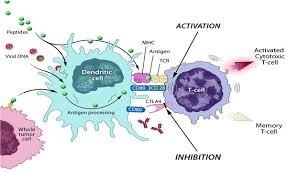 I have been getting Dendritic Cell vaccines from Dr. Nesselhut in Duderstadt for two months now. It is my view that he is the world’s foremost authority on immunotherapy. But…..
I have been getting Dendritic Cell vaccines from Dr. Nesselhut in Duderstadt for two months now. It is my view that he is the world’s foremost authority on immunotherapy. But…..




